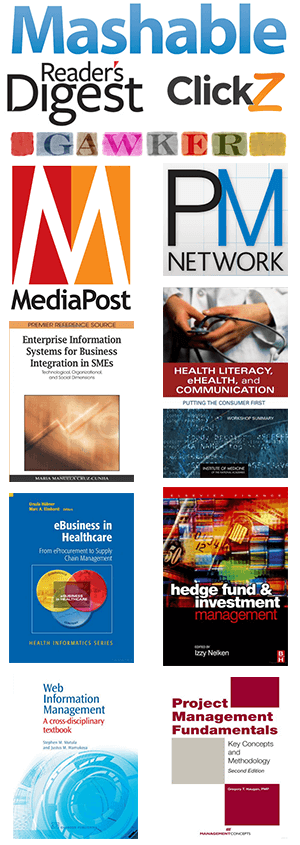Expanding Your Online Presence: Smarter Marketing for the Modern Age

Businesses need to adopt smarter marketing strategies that focus on engagement, authenticity, and measurable results. This blog explores how to enhance your online presence by utilising innovative tactics that appeal to modern consumers while remaining adaptable to changes in digital trends.
Why Your Online Presence Matters More Than Ever
Having an online presence has evolved from being a ‘nice-to-have' to a necessity for businesses of all sizes. Whether you're looking to attract local customers or expand globally, a robust online presence ensures that your brand is visible and accessible where your audience spends most of their time. But it's not just about being present; it's about creating meaningful, lasting connections with your audience through strategic efforts that drive value and results.
Online presence can help your business to:
- Build deeper relationships with your customers
- Expand your market reach and customer base
- Create a platform for ongoing brand storytelling and content engagement
- Stay relevant by adapting to consumer behaviour shifts in real time
A strategic online presence doesn't just increase visibility; it opens doors for enhanced customer loyalty and long-term business sustainability. To stay ahead of emerging trends and maximise your online marketing efforts, partnering with experts like clickintelligence.co.uk can provide valuable insights and strategies that drive targeted results.
The Role of Personalisation in Modern Marketing
In a digital landscape where consumers are flooded with information and advertisements daily, personalisation has become a powerful tool in capturing attention and building trust. Personalised marketing speaks directly to your audience's interests and behaviours, creating a more tailored experience that fosters stronger relationships and boosts conversion rates.
1. Data-Driven Personalisation
By leveraging data analytics, businesses can craft more personalised experiences that cater to the preferences, behaviours, and needs of their customers. For example, personalised email campaigns based on browsing history or purchase patterns have been proven to yield higher open rates and customer engagement.
2. Dynamic Content
One way to personalise the customer experience on your website is through dynamic content. Dynamic content changes based on user behaviour or demographics, allowing you to showcase specific products, services, or offers that are most relevant to the person visiting your site.
3. Targeted Advertising
Personalised ads that use insights gathered from user activity (like their social media likes, search habits, or location) can significantly improve ad relevance and customer response. Platforms like Facebook and Google allow you to create highly targeted campaigns that connect with the right audience at the right time.
Embracing the Power of Interactive Content
Traditional marketing methods, like static ads and brochures, can only do so much to capture attention in an increasingly digital world. To truly engage customers, you need to adopt interactive content that encourages participation and interaction.
1. Interactive Quizzes and Surveys
One way to engage your audience is through quizzes, surveys, and polls. These tools allow users to interact with your brand in a fun and informative way, while providing you with valuable data on their preferences. For instance, a quiz can help potential customers to determine which product or service best meets their needs, while simultaneously collecting insights into their preferences.
2. Interactive Videos and Live Streams
Interactive videos and live streaming have surged in popularity, especially in industries like retail, fitness, and entertainment. Live streaming creates a sense of urgency and excitement, while interactive videos allow users to engage by choosing how they interact with the content. This level of engagement can lead to higher customer retention rates and increased sales.
3. Gamification
Gamification is another powerful interactive tool that adds a layer of entertainment to the customer experience. By integrating game-like elements, such as challenges, leaderboards, and rewards into your marketing strategy, you can incentivise users to engage more frequently with your brand, ultimately increasing brand loyalty.
Harnessing the Potential of Micro-Moments
Micro-moments refer to those brief instances when people turn to their devices for quick answers to questions or problems. With the rise of mobile device usage, these micro-moments have become a key area where businesses can reach their target audience. Capturing these moments involves delivering valuable content in real time, when consumers are most likely to need it.
1. Answering Immediate Questions
Whether through voice search, mobile searches, or social media interactions, consumers expect answers immediately. Businesses that optimise their websites for voice search and provide quick, concise answers to frequently asked questions can capitalise on these micro-moments.
2. Providing Instant Gratification
Consumers increasingly want convenience and instant access to services. Offering solutions that help customers find what they need quickly, such as streamlined shopping carts, one-click purchasing, or immediate customer support through live chat, can enhance their experience and increase the likelihood of a conversion.
3. Real-Time Social Media Interaction
Social media platforms offer a wealth of opportunities to engage in real time with your audience. Responding to comments, engaging in conversations, and addressing concerns immediately during a trending moment can build brand loyalty and enhance your reputation as a responsive, customer-focused business.
Nurturing Long-Term Relationships with Customer Retention
While acquiring new customers is crucial, maintaining existing ones is equally important. Customer retention is a more sustainable way to grow your business and increase profits.
1. Loyalty Programmes and Rewards
Loyalty programmes incentivise customers to return to your brand by offering rewards, exclusive discounts, or early access to new products. These programs foster a sense of appreciation and make customers feel valued, which increases the likelihood of repeat purchases.
2. Post-Purchase Engagement
Engage your customers after their purchase through personalised follow-up emails, satisfaction surveys, and post-purchase recommendations. This keeps your brand top of mind and encourages customers to stay loyal to your products or services.
3. Customer Advocacy
Empower your satisfied customers to become advocates for your brand. Encourage them to share their experiences online through reviews, testimonials, or social media posts. Word-of-mouth recommendations from trusted peers can have a significant impact on driving new business.
Focusing on User Experience (UX)
In a world where consumers expect seamless interactions across all digital platforms, a great user experience (UX) can make or break a brand's online presence. Optimising your website for user experience involves ensuring that visitors can navigate easily, find what they're looking for, and enjoy a smooth, efficient journey.
1. Website Speed and Performance
Slow-loading websites lead to higher bounce rates and lower conversions. Ensure your website is optimised for speed, so visitors can quickly access the content and products they need.
2. Clear Navigation and Design
Your website should have a clear, easy-to-follow layout with intuitive navigation. Organising your content into categories and using well-placed call-to-action buttons can guide users through the site and encourage them to take action.
3. Mobile Optimisation
With the growing reliance on smartphones, ensuring that your website is fully optimised for mobile devices is essential.
Embracing the Future of Marketing Trends
Keeping pace with evolving trends will ensure your brand stays competitive and relevant. Here are a few trends that are poised to significantly shape the future of online marketing:
1. Leveraging Artificial Intelligence (AI) and Automation
The rise of artificial intelligence is transforming how businesses interact with their customers. Tools powered by AI, such as chatbots, predictive analytics, and automated content creation, aren't just enhancing operational efficiency, but also making interactions more personalised. Automation streamlines processes, allowing businesses to focus on more strategic tasks while improving the accuracy and relevance of their marketing efforts. With AI, businesses can also provide immediate, tailored responses, enhancing the customer experience in real time.
2. Revolutionising Experiences with Augmented Reality (AR) and Virtual Reality (VR)
By integrating AR and VR, customers can virtually try on clothes, test out furniture, or explore properties without leaving their homes. These technologies are becoming essential for industries like fashion, real estate, and home decor, where the ability to visualise products in real time can significantly influence purchasing decisions.
3. Prioritising Sustainability and Ethical Business Practices
A shift in values means that businesses that prioritise sustainability and ethical practices will not only stand out but build a loyal customer base. Brands committed to eco-friendly production methods, reducing waste, and supporting social causes are likely to create a lasting impression and deepen consumer trust.
Looking Ahead
In the ever-changing landscape of digital marketing, adapting to new trends and incorporating innovations like AI, AR, and sustainable practices will be key to driving future growth. Marketers must embrace a personalised approach, foster interactive content, and engage customers in meaningful ways to ensure lasting connections. The future of successful marketing lies in strategic adaptation – ensuring that your brand not only attracts new customers but builds lasting relationships for long-term success.
839GYLCCC1992



Leave a Reply